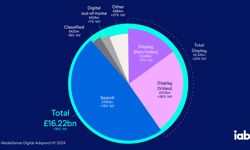Unfortunately, shaking off the industry’s old, self-defeating dynamics hasn’t been so easy. Some progress has been made, but tensions between wholesalers and publishers / national distributors and divergent publisher agendas have diverted focus from positioning the category most effectively to retailers.
So what would make anyone think that the industry might, at this juncture, actually have a shot at throwing off its legacy thinking and positioning itself for breakthroughs?
In a word, survival. That is not a cynical statement. The urgent need to mobilise for constructive change is a reality that is now bluntly and openly stated by quite a few veteran industry executives.
The ironic truth is that it’s the very convergence of a multitude of threats — a clichéd "perfect storm" — that’s creating the window of opportunity, forcing the industry to put aside parochial concerns. "The only major changes we’ve seen over the years have been brought about by crisis," muses one distribution executive. "Now, we have to pull together. It’s reached a tipping point."
On top of unprecedented competition from other media and declining reading habits, stagnant unit sales growth and wholesalers’ long-deteriorating financial scenario, magazines are losing checkout real estate to sodas / beverages, confections and other categories that know how to deliver on retailers’ expectations and cohesively market themselves.
Retailers are spelling out specific demands for the magazine category, and the industry can either participate constructively or risk being more and more marginalised.
The action has started at the wholesale level. To reduce their own operational costs and address retailers’ growing frustration with waste and low sell-through rates, wholesalers are aggressively cutting draws. Collectively, they cut an estimated half a billion copies out of retail distributions last year, according to New Single Copy editor John Harrington.
Wholesaler Source Interlink, which reportedly cut about 57 million copies from distributions in last year’s first half, plans to cut another 40 million copies by this summer, in a push to raise its average magazine sell-through rate from about 38% to 50%. Source president Jim Gillis says he considers 40 million to be conservative. "We shredded 650 million copies last year — copies that had to make road trips back and forth between the stores and the warehouse," he points out.
Wal-Mart takes action
Meanwhile, as part of its overall corporate "sustainability" initiative, Wal-Mart, which accounts for about 12% to 15% of US magazine sales, is requiring that the category increase sales by 5%, up average efficiency to 50%, and slash waste. It’s also cut its list of authorised magazine titles from about 2,500 to 1,100. Those 1,100 reportedly generate at least 95% of the chain’s total magazine sales (some say that the top 250 or so titles account for perhaps 90% of the retailer’s sales). While the title cuts may sound drastic, Harrington points out that no Wal-Mart store displays more than a few hundred titles at a time, and many of the titles now officially delisted had very limited distribution within the chain.
Now that timely, store-level data is available, there’s growing evidence that it’s possible to cut draw intelligently while minimising the impact on sales — particularly when publishers / ND’s work closely with wholesalers. And if sales can be more or less maintained for rate base purposes, publishers have every reason to want to reduce waste. Paper costs alone are projected to jump as much as 25% this year.
What’s happened to sales in the wake of last year’s draw cuts? Overall unit sales in first half ’07 were flat and ABC-audited titles’ unit sales rose 1%, while average efficiency rose from 36.1% to 38.4%, according to Harrington. Total-industry figures for second half ’07 weren’t out at this writing, but based on publishers’ (not yet audited) claims, circulation analyst Baird Davis estimated that ABC-audited titles lost 1.8% in unit sales but, through cover price increases, gained 2.8% in revenue (average price rose from $3.36 to $3.52). Harrington pegged all (ABC and BPA) audited titles’ units at dead flat (-0.1%), and dollar sales up 5.3%.
| Newsstand Performance, US Audited Titles, 2nd Half 2007 vs 2nd Half 2006 | ||
| 2nd Half 2007 | % Change vs 2nd Half 2006 | |
| Unit sales for period | 473.6 million | -0.1% |
| $ sales for period | $1.67 billion | +5.3% |
| Source: The New Single Copy analysis, based on ABC and BPA publisher claims, pending auditing. | ||
Of course, many divisive issues remain. Retailers, wholesalers and leading newsstand publishers maintain that sales will improve as a result of less crowded in-store mainlines and better in-store merchandising. Publishers most vulnerable to delisting based on straight sales volume argue that any gains for leading titles will never make up for the sales lost by cutting out secondary titles, and that the industry should focus on improving efficiencies of the largest-selling titles that also generate the preponderance of returns.
There will be blood. Even big publishers will lose mass distribution for some titles. And all publishers are concerned that some retailers will go too far, too fast, gaining short-term efficiencies but damaging the category long-term. (Early this year, one drug / discount chain announced plans to leapfrog the category’s efficiency from about 30% to 45% within just a few months’ time.)
But there are glimmers of improving cooperation. Channel groups are talking more openly, and the national distributors’ trade association, IPDA, is spearheading an initiative to help the industry reach out to retailers with a unified presentation of the category’s profitability and value.
The battle lies ahead… but maybe it’s at least been joined.










